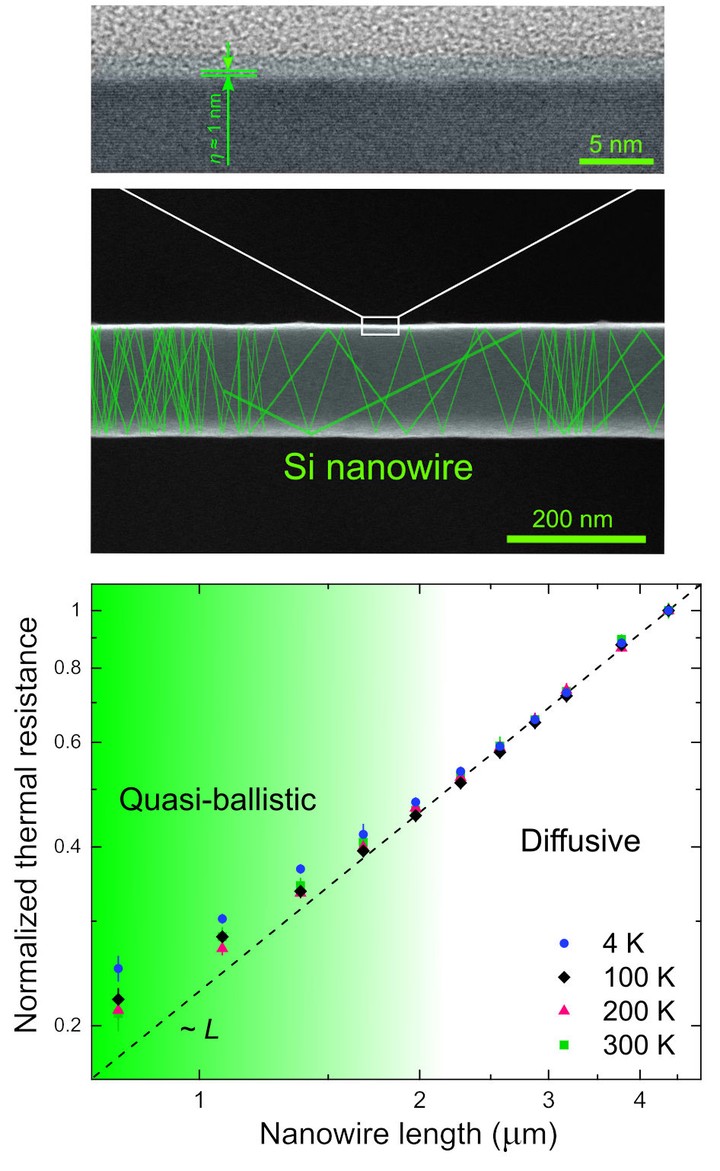Quasi-ballistic heat conduction due to Lévy phonon flights in silicon nanowires

Abstract
Future of silicon-based microelectronics depends on solving the heat dissipation problem. A solution may lie in a nanoscale phenomenon known as ballistic heat conduction, which implies conduction of heat without heating the conductor. However, attempts to demonstrate this phenomenon experimentally are controversial and scarce, whereas its mechanism in confined nanostructures is yet to be fully understood. Here, we experimentally demonstrate quasi-ballistic heat conduction in silicon nanowires (NWs). We show that the ballisticity is the strongest in short NWs at low temperatures but weakens as the NW length or temperature is increased. Yet, even at room temperature, quasi-ballistic heat conduction remains visible in short NWs. To better understand this phenomenon, we probe directions and lengths of phonon flights. Our experiments and simulations show that the quasi-ballistic phonon transport in NWs is essentially the Lévy walk with short flights between the NW boundaries and long ballistic leaps along the NW. Thus, we conclude that ballistic heat conduction is present in silicon even at room temperature in sufficiently small nanostructures and may yet improve thermal management in silicon-based microelectronics.
ACS Nano 12, 11928 (2018)